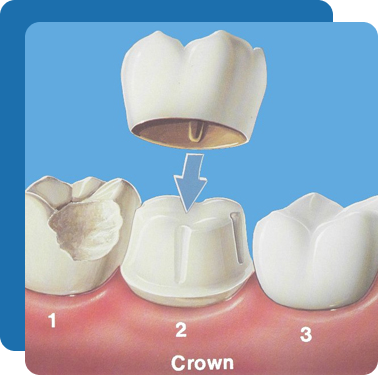A crown is typically put in two visits to Monarch Dentistry, Hurontario st. Mississauga. Your dentist will inspect the tooth at the initial session to establish the severity of your dental troubles and whether or not a crown can be supported. If a crown can be placed, the tooth will be shaved down so that the crown may be firmly placed on it.
Following the filing of the tooth, an imprint of your teeth will be utilised to make the crown, and your dentist may supply you with a temporary crown. The temporary crown preserves the tooth and gets you used to how your new crown will feel. The crown will be applied at your second visit after it has been completed.
The temporary crown will be removed, and the permanent crown will be fitted to make sure that it fits into the mouth and onto the tooth correctly. If the tooth needs any adjustments, your dentist will make these corrections and then bond the crown to your tooth. Bonding it to the tooth keeps it from slipping out of place of falling off of the tooth. Your crown will feel odd at first, but soon it will feel just like one of your natural teeth.
Reasons To Have Crowns Put In
Your dentist may recommend a dental crown for your teeth to accomplish any of the following:
· Replace old or damaged fillings
· Protect teeth from breaks and fractures
· Attach partials and bridges onto teeth
· Restore the beauty and function of teeth
· Cover dental implants when they have been installed
· Hide any discoloration in teeth
· Protect teeth after a root canal has been performed
Porcelain Inlays & Outlays
Your teeth are incredibly sturdy, yet they may still be damaged. For example, if proper dental hygiene practises such as frequent brushing and flossing are not maintained, teeth may develop tooth rot (cavities). In addition, teeth can be damaged by injury or stress. Small areas of damage, like as cavities, are generally efficiently addressed with a dental filling, however severe damage or decay may need the use of a crown. However, sometimes the damage falls somewhere in the between, when a filling is insufficient to fix the condition but a crown would necessitate extensive dental treatment. In certain circumstances, a dental inlay or onlay may be the solution.
Benefits of Inlays and Onlays
Both restorations are custom-made for a patient and are bonded to an affected tooth or teeth. In this way, they effectively repair damage and restore functionality and appearance to a tooth. Benefits of both restorations include:
Preserve more of the natural tooth (dental crowns require a certain portion of a tooth to be filed down):
· Look natural
· Strengthen the structure of a tooth
· Are durable and withstand forces well










